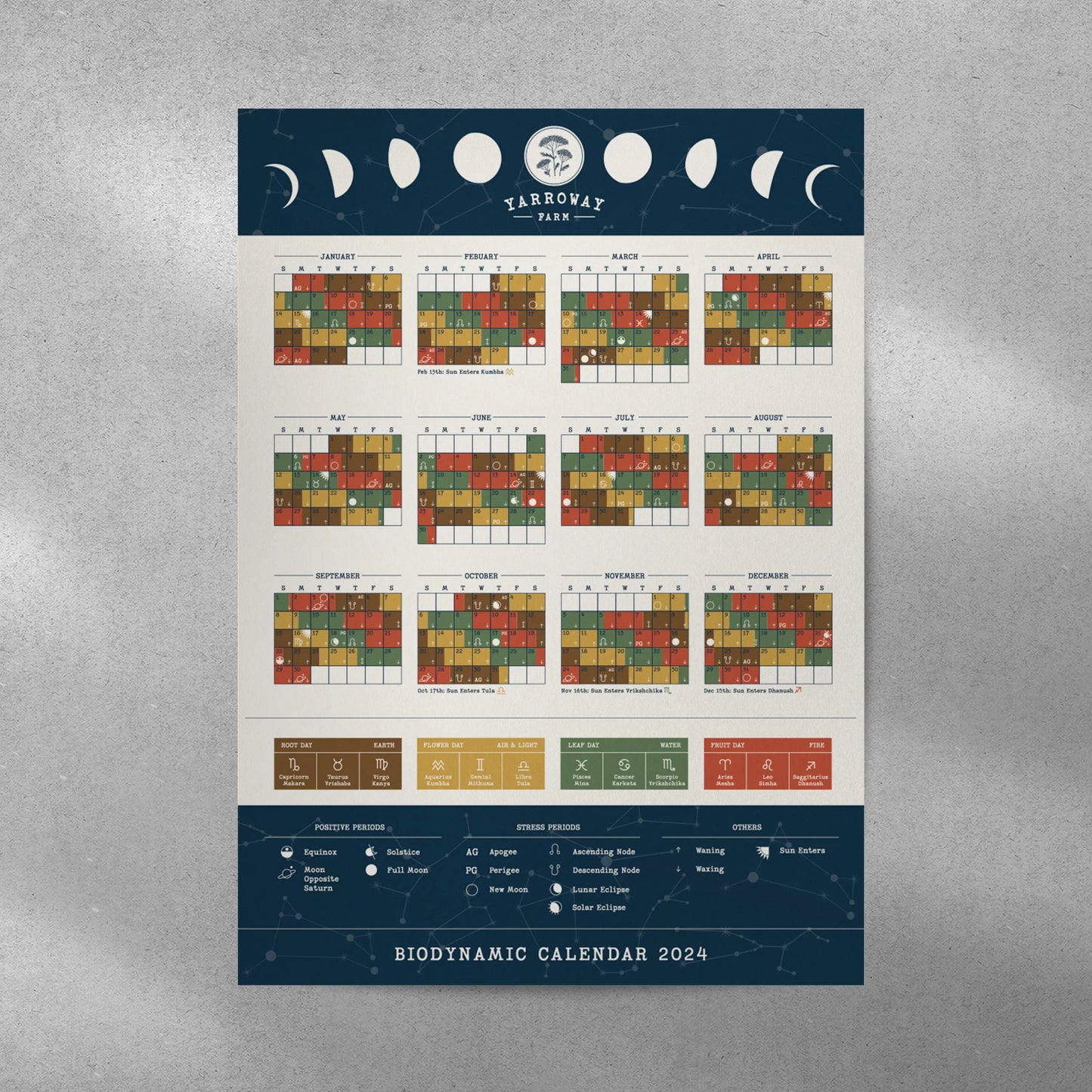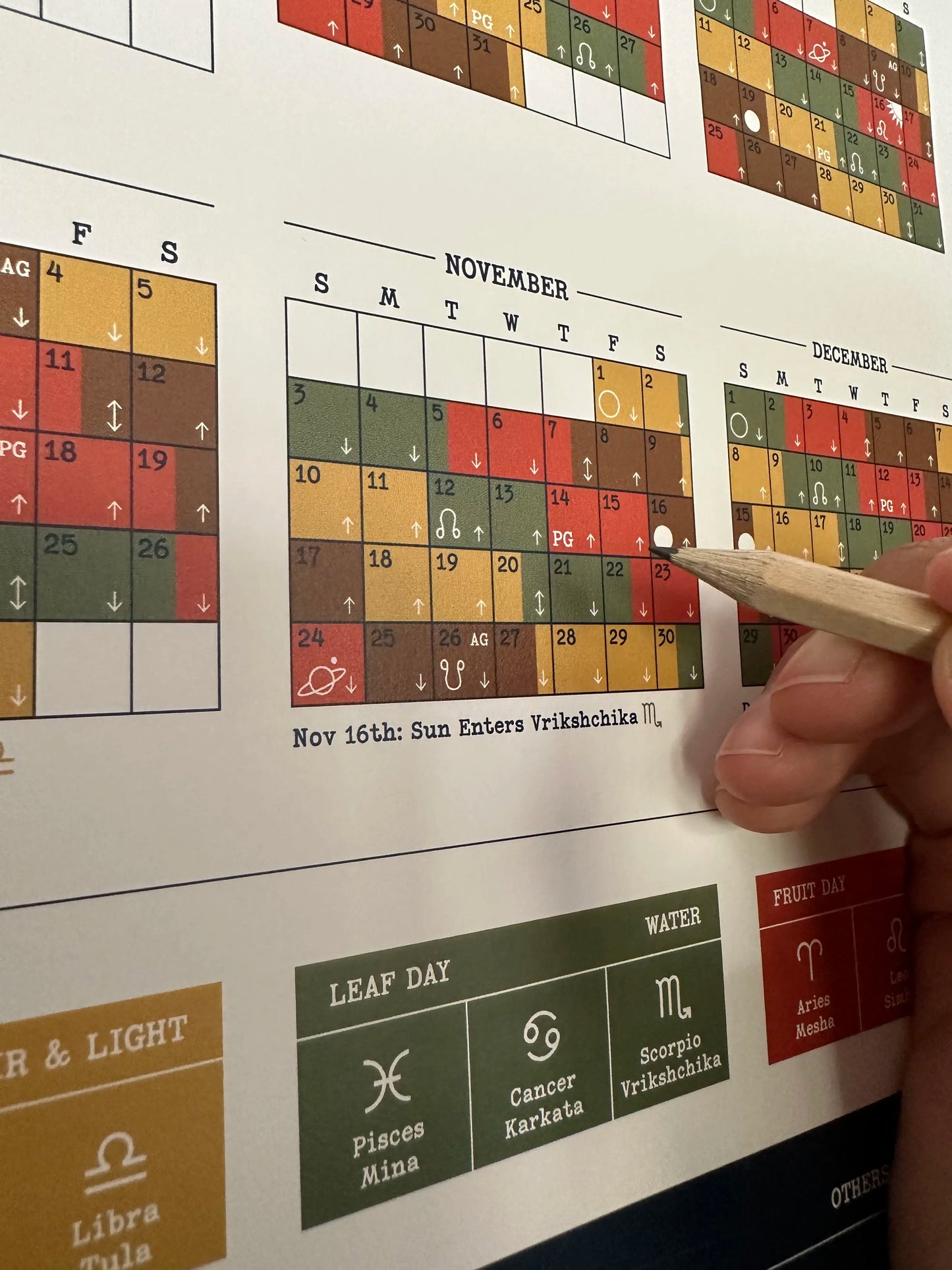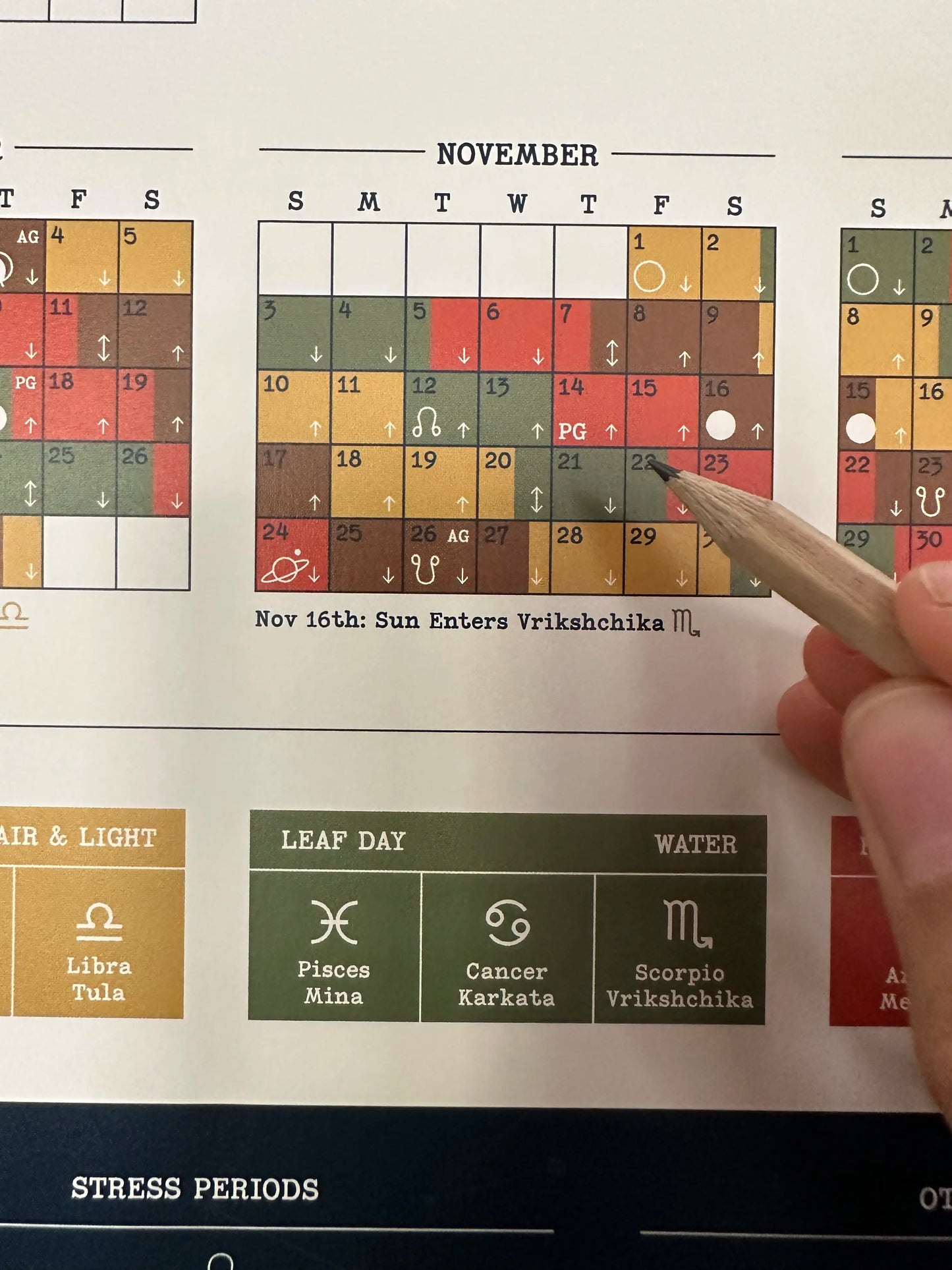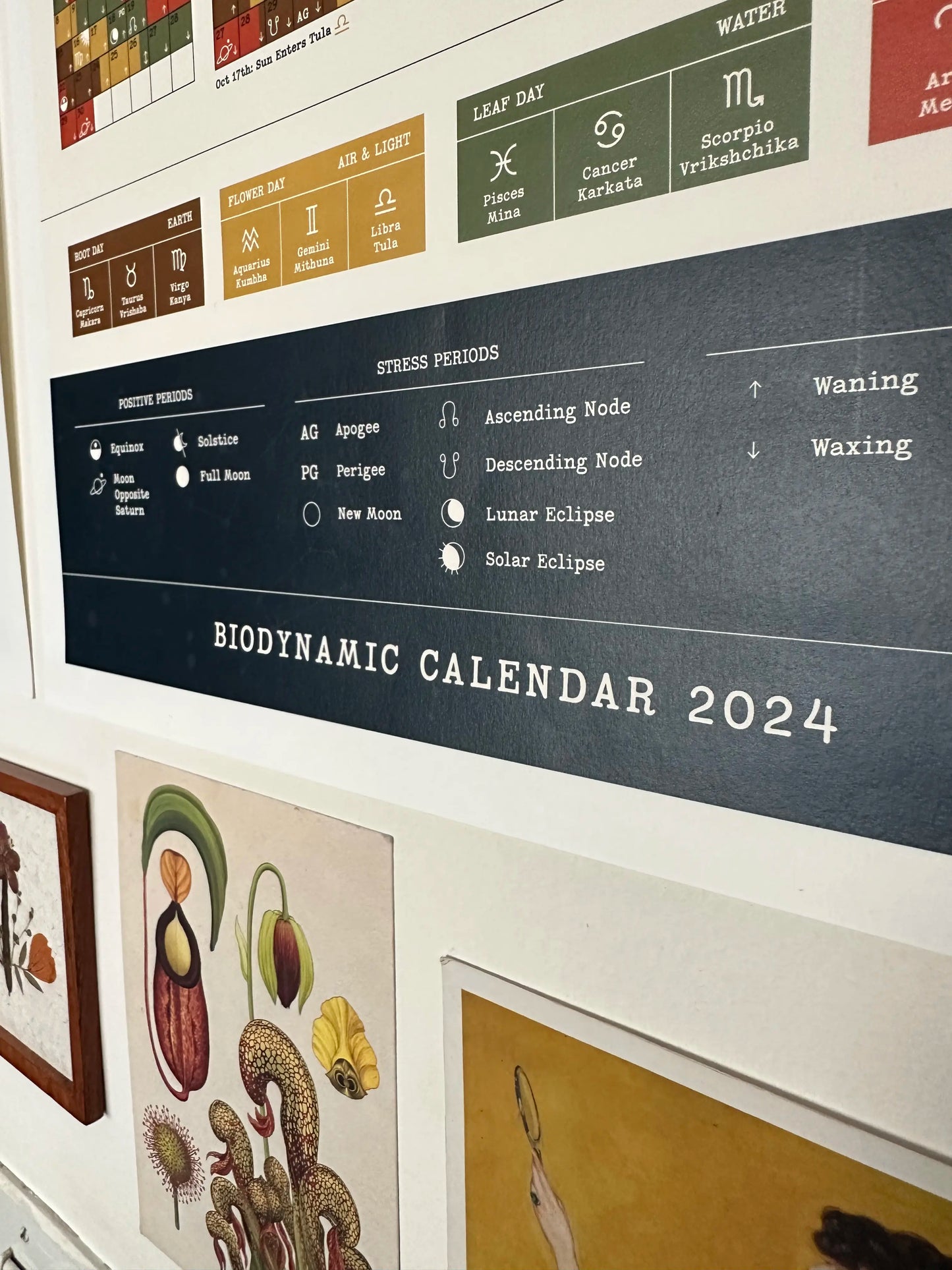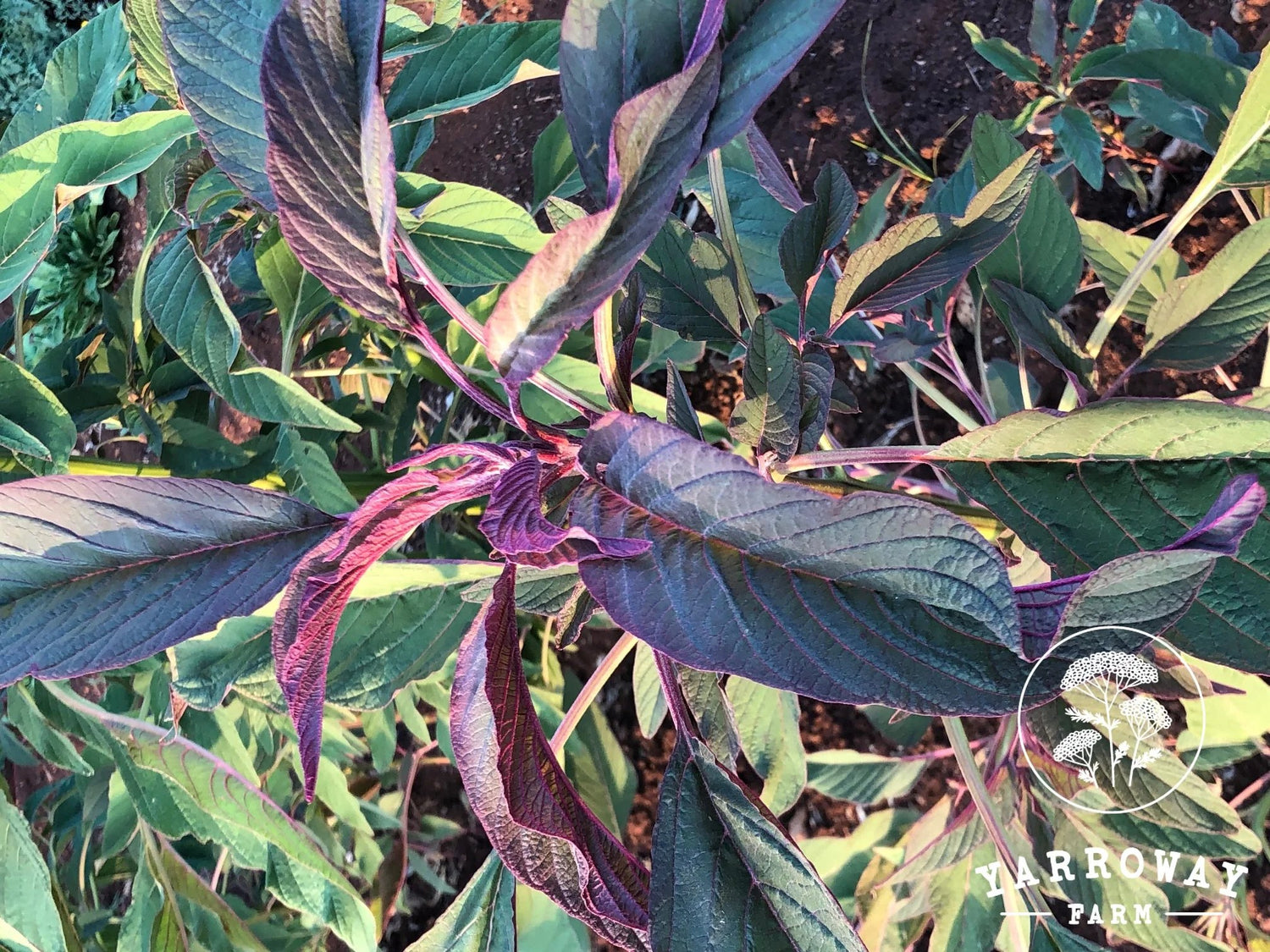BIODYNAMIC CALENDAR
The Biodynamic Calendar can help us to take advantage of the effects that the moon, the sun and the planets have on the plants. We are dependent on both the sun and the moon for life on earth, and since time began, both have held a profoundly symbolic importance for mankind. The influences of the Moon’s gravitational pull on the seasons and plant growth (as well as animal and human behaviour) has been documented since ancient times. Biodynamics acknowledges these and other subtle cosmic forces, and works with them throughout the growing cycle. This is what is meant when people say ‘planting by the moon’.
Biodynamic farmers and gardeners across the world follow this calendar that offers advice on when to work the soil, apply preparations, plant seeds, transplant seedlings, prune, and harvest. Biodynamic agriculture works with the vital energies in nature, which is why the consideration of cosmic rhythms in the cultivation of plants is so important. Working with harmony with nature to maximize yields is an age-old practice that applies to sustainable agricultural practices. Biodynamic farmers use a variety of techniques to enrich the soil, manage a balance of plantings, and care for animals on the land. This approach is often compared to organic farming, as it involves farming without applications of chemicals, but it is more complex and involves considering nature as a holistic system and working within that system.
The biodynamic calendar is a form of planting calendar, but usually includes more advanced guidance for biodynamic farmers, as their practices include applying very specific preparations, like horn manure, to their soils. The timing and placement of these preparations is important, and a biodynamic calendar can help people select the optimal period for various activities. Each month the moon moves through all twelve constellations of the zodiac in turn. This is referred to as the moon’s sidereal cycle and forms the basis of the biodynamic calendar. Although the waxing and waning (synodic) cycle is the most well-known lunar rhythm, it plays a small part in this
calendar.
Here are some simple guidelines that will help you interpret the calendar better:
-
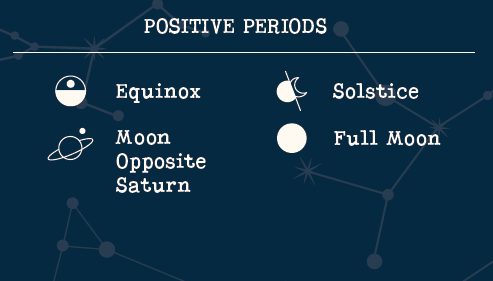
POSITIVE PERIODS
Full Moon: 48 hours building up to Full Moon. A period of high humidity and high water content in Sap. Take advantage of the moon benefits during this time.
Activities - Sow and Transplant, Apply Compost/CPP/ Liquid
Manure. Good period for Fungus/Insect/Pest/Weed ControlMoon Opposite Saturn: It’s simply when Moon and Saturn are standing opposite side to earth at 180 degree. This position occurs in 27.5 days. 48 hours building up to Moon Opp Saturn - Calcium-Silicon
forces are in perfect balance during this period.Activities - Sow and Transplant. Use aerial sprays and BD501 to improve taste and keeping quality of fruits and veggies. Strengthens plant
against fungus. -
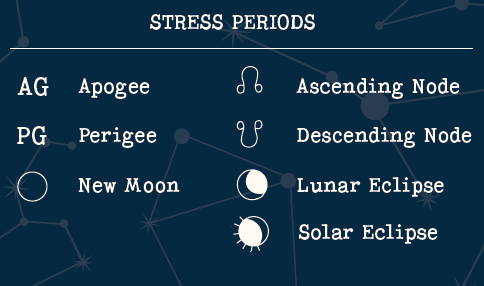
STRESS PERIODS
New Moon: 48 hours building up to New Moon. Period of great stress. Moon blocks the beneficial influence of the sun. Avoid ALL Agricultural Activity.
Nodes (Ascending and Descending): The Moon’s nodes are the points where the Moon’s path crosses the path of the Sun. This is approximately a fortnightly rhythm. The crossing points are called as nodes and these are the places and times where eclipses can occur. The terms ascending node and descending node indicates whether the moon is ascending and descending in relation to the sun’s path. This is approximately a fortnightly rhythm. The influence of the node lasts for approximately 6 hours on either side of the node, and the effect is similar to an eclipse. Nodes are like mini-eclipses & again periods of great stress. Avoid ALL agricultural activity.
Apogee & Perigee: When the moon is closest to the Earth is called perigee and the farthest from the earth is called apogee. The moon moves from perigee to apogee and back again in 27.5 days approx. The distances at apogee and perigee are not constant. 12 hours on either side is a stress period. Avoid sowing and transplanting. But on apogee days we can sow the bulbs like potatoes.
-
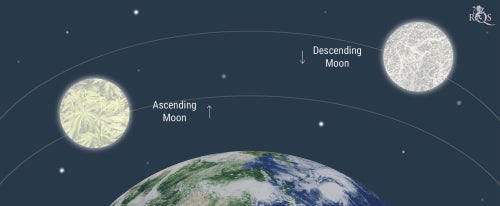
ASCENDING AND DESCENDING MOON
The Ascending and Descending Moon cycle, which involves the northern and southern arcs of the Moon’s orbit, is a 27.2 day cycle.
Ascending Moon: The distance between moon and earth increases day by day for 13.6 days pprox. These days are ascending days. An ascending period is like spring and summer when the Earth breathes out. We see
this in the growth above the soil’s surface. With an ascending Moon the sap carries growth forces upwards more strongly and increases plant vitality. Although germination takes place below ground, this upward striving makes it unfold above the surface.Activities - Spray BD501 (morning). Sow Seeds. Harvest
fruits/seeds/flowers/hay. Prune cuttings for Grafting.Descending Moon: The distance between moon and earth becomes closer for 13.6 days approx. These days are mentioned as descending days. A descending period is like autumn and winter when the earth breathes in and draws the growth forces back below the soil’s surface. This energizes the lower parts of the plant, particularly the roots.
Activities - Cultivate Soil. Apply, plant and dig BD500
(evening). Make and spread Compost/CPP/Liquid Manure. Transplant. Harvest root
crops. -
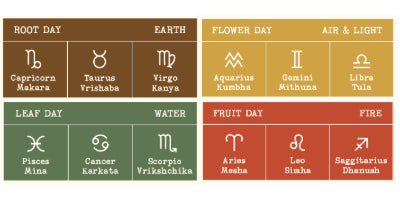
THE CONSTELLATIONS
Since ancient times the twelve zodiac constellations have
been associated with the each of the four elements: Earth/Air/Water/FireThree constellations are connected to each element, and each
element is related to a part of the plant:Root (EARTH - Taurus, Virgo and Capricorn):
Days to focus on Root crops such as – potato, carrot,
beetroot, radish, ginger, yam, tapioca, etc., Also Bulb crops such as – onions,
garlic, turnip, leeks.Flower (AIR - Gemini, Libra and Aquarius):
Days to focus on all flowering crops, including broccoli and cauliflower.
Leaf (WATER - Cancer, Scorpio and Pisces):
Days to focus on leaf based crops such – spinach, lettuce, cabbages. Also sugarcane and fodder crops grown for their green growth – cowpea, sorghum, grasses, etc.
Fruit (FIRE - Aries, Leo and Sagittarius):
Days to focus on any crop that produces an edible part after flowering. Beans, peas, tomatoes, okra, brinjal, squash/gourd, berries, fruit trees and shrubs. Also oilseeds and grains – rice, wheat, millets, pulses, etc.
So, depending on where the Moon is, the influences of the
constellation behind it are brought into the soil through cultivation, the use of composts and liquid manures and planting of seeds. This connects the soil to the rhythms of the cosmos.
This detailed calendar is made using Astronomical Data provided by Dario Anderle, Trieste, Italy. The annual biodynamic calendar customized for India and released by BDAI (Biodynamic Association of India) and Bhaikaka Krishi Kendra in Anand, Gujarat. (See last page for area time zone adjustments within India).
You can access the full calendar below or purchase the simplified user friendly version we made:
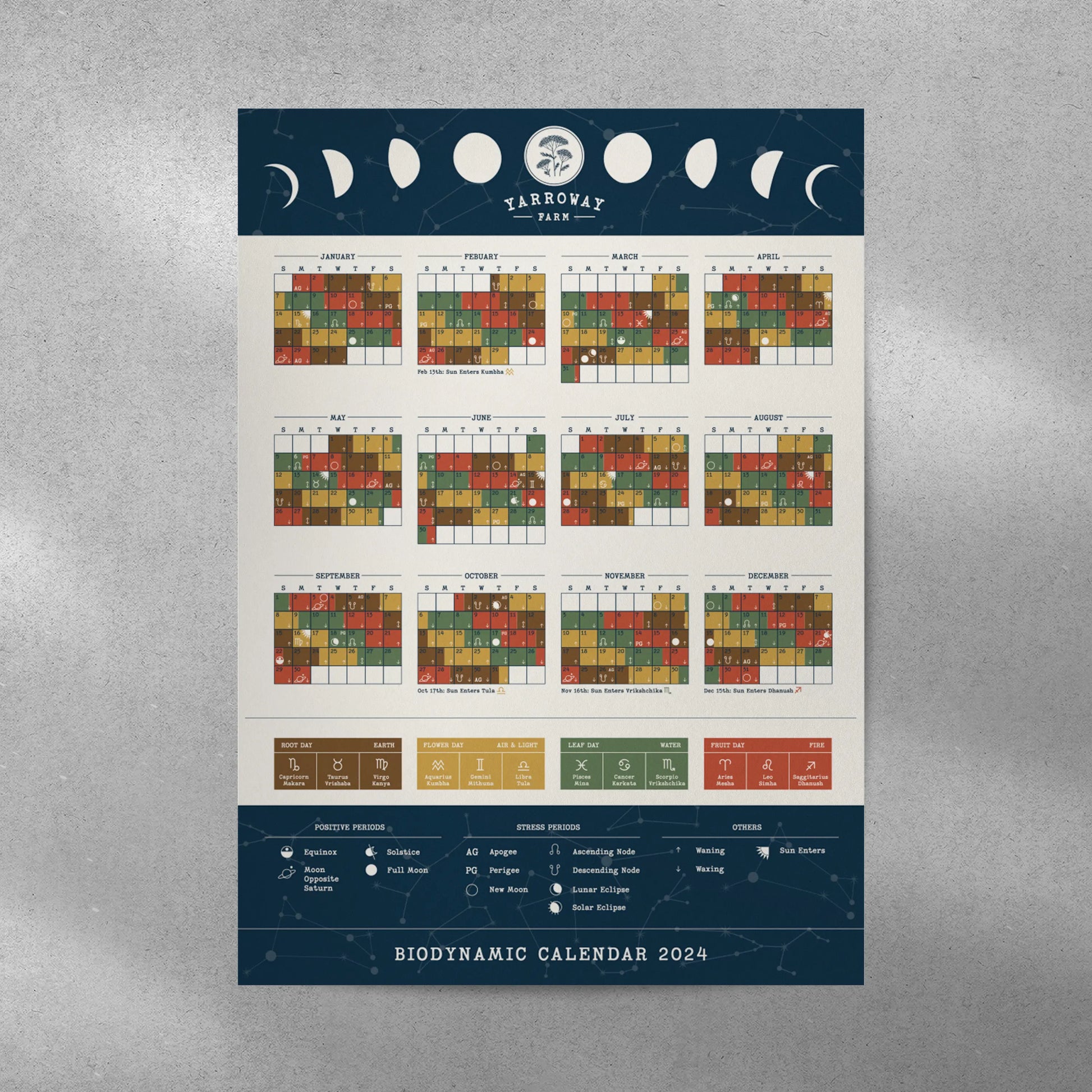
Biodynamic Calendar 2024 - Simplified
Share
